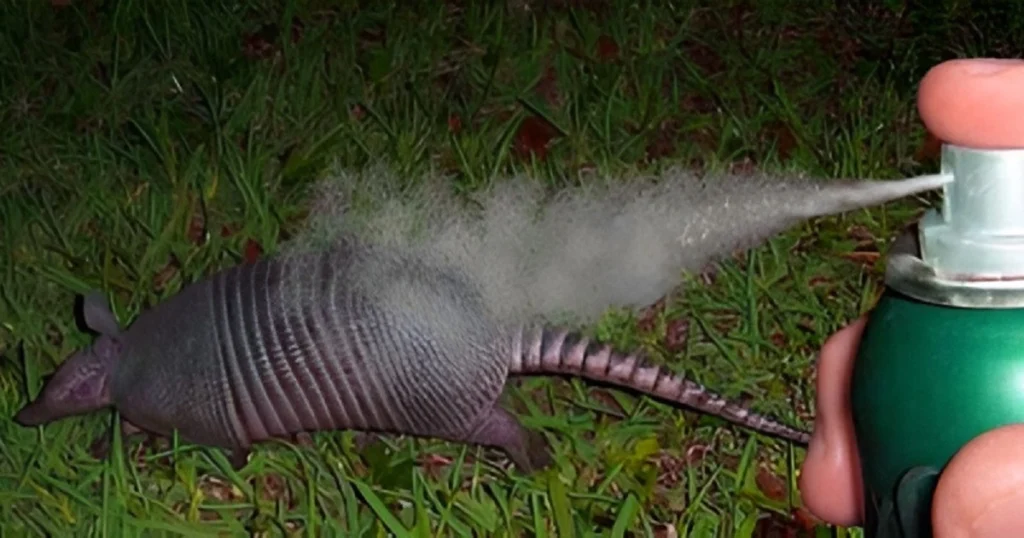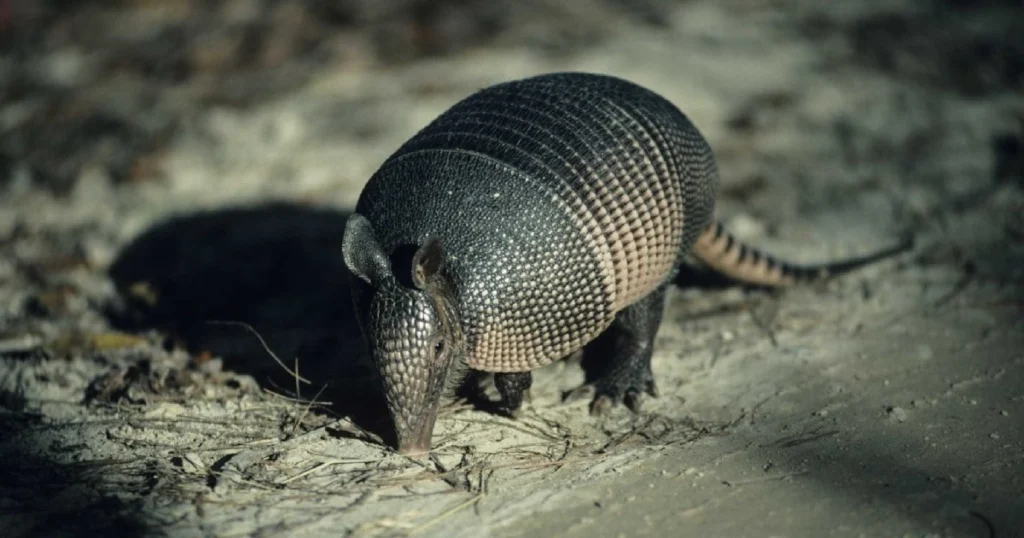
Armadillos are known for having armored shells and digging abilities. However, they are also a nuisance to homeowners and gardeners alike. Armadillos love to dig up lawns and gardens in search of insects and grubs, causing damage to property and landscaping. As such, many people are looking for effective armadillo deterrents to keep these critters at bay.
Various armadillo deterrents, ranging from natural remedies to high-tech solutions, are available on the market. Some people swear by using mothballs or predator urine to keep armadillos away, while others prefer to install physical barriers or sonic repellents. With multiple options available, it’s challenging to determine which method is the most effective.
This article will explore the various armadillo deterrents available and evaluate their effectiveness. We will also provide tips for preventing armadillos from entering your property in the first place. Whether you're dealing with a single armadillo or a whole family, this article will provide the information you need to protect your property and keep these pesky critters at bay.

Armadillos are known for their unique physical characteristics, such as armored shells and long snout. However, these creatures also have interesting behaviors that are worth noting. For instance, armadillos are nocturnal animals, meaning they are most active during the night. They are also solitary animals and typically do not live in groups.
One of the most notable behaviors of armadillos is their tendency to dig. They use their strong claws to dig burrows that serve as their homes, ranging from shallow depressions to extensive tunnel systems. Armadillos also dig for food, primarily feeding on insects, grubs, and small invertebrates found in the soil.
Armadillos are native to the Americas but can be seen in forests, grasslands, and deserts. They are particularly common in warm, humid environments such as the southern states, Mexico, and Central and South America.
Armadillos can be found in urban environments, including suburban and rural areas with plenty of vegetation and soil to dig in, as well as parks and other green spaces.
Armadillos can cause damage to lawns and gardens by digging for food or creating burrows. As such, it may be necessary to deter them from certain areas. One effective armadillo deterrent is installing physical barriers such as fences or netting around gardens or other areas that need protection.
Another option is to use homemade armadillo repellent, which can be made from common household ingredients such as garlic, cayenne pepper, and dish soap. Mix these ingredients with water and spray them on the affected area to repel armadillos.
Understanding armadillo behavior and common habitats can help develop effective deterrent strategies.

Armadillos are known to cause significant damage to lawns, gardens, and landscapes. To prevent these creatures from causing havoc, various types of armadillo deterrents are available in the market. These are the most effective types of armadillo deterrents:
Chemical repellents are one of the most popular types of armadillo deterrents. These products are designed to repel armadillos by emitting a strong odor that they find unpleasant. Some of the best armadillo repellents include predator urine, castor oil, and garlic. These products are natural, safe, and effective in keeping armadillos away from your property.
Physical barriers, such as fences, walls, or netting, are another effective way to deter armadillos from entering your property. The best physical barriers are those buried at least a foot deep into the ground and extending at least 2-3 feet above the ground. This prevents armadillos from digging under or climbing over the barrier.
Electronic repellers are a modern and innovative way of deterring armadillos. These devices pump ultrasonic sounds that are highly unpleasant to armadillos and other pests. Ultrasonic armadillo repeller reviews have shown that they effectively keep armadillos away from your property. Electronic repellers are safe, humane, and eco-friendly.
In conclusion, various types of armadillo deterrents work. The best armadillo repellent depends on your specific situation and needs. Choosing a safe, effective, and eco-friendly product is important whether you opt for chemical repellents, physical barriers, or electronic repellers.

Several natural armadillo deterrent strategies can keep these animals away from your property. The most effective way to sway armadillos is to use homemade armadillo repellent. This can be made by mixing castor oil, cayenne pepper, and water in a spray bottle. The mixture should be sprayed around the property's perimeter, creating a barrier armadillos will avoid.
Another effective home remedy is garlic. Garlic has a strong odor that armadillos find unpleasant, so planting garlic around your property's perimeter can help keep them away. Additionally, placing mothballs around the perimeter can also be effective, as armadillos find the smell of mothballs unpleasant.
You can use biological repellents to deter armadillos. One of the most effective is predator urine. Predator urine can be purchased online or at a hunting store and should be sprayed around the property's perimeter. The scent of the urine mimics the presence of a predator, deterring armadillos from entering the area.
Another biological repellent is plants that armadillos find unpleasant. Some effective plants repelling armadillos include alliums, fritillarias, and daffodils. These plants can be planted around the property's perimeter to create a barrier.
Overall, several natural armadillo deterrent strategies can be used to keep these animals away from your property. A combination of homemade armadillo repellent, garlic, mothballs, predator urine, and unpleasant plants can create a barrier that armadillos will avoid.

When designing an armadillo-resistant garden, it is important to remember that armadillos are primarily nocturnal and have poor eyesight. Therefore, it is recommended to use plants with strong scents or textures that will deter them from digging.
One effective way to deter armadillos is to create a border around the garden using a physical barrier such as rocks, bricks, or wire mesh. This will prevent the armadillos from entering the garden and causing damage.
Another option is to create raised garden beds, making it difficult for armadillos to dig and burrow. These beds can be made from wood, concrete, or other durable materials.
Certain plants have been known to repel armadillos due to their strong scent or taste. These plants include:
In addition to these plants, it is also recommended to avoid planting certain types of vegetation that armadillos are known to feed on.
It is important to note that while these plants may deter armadillos, they are not foolproof solutions and may not work in every situation. To create an effective armadillo-resistant landscape, it is recommended to use a combination of methods, such as physical barriers and plant deterrents.
Overall, creating an armadillo-resistant landscape requires careful planning and consideration of the armadillo's habits and preferences. Homeowners can protect their gardens and landscaping from armadillo damage by using physical barriers and plant deterrents.

Installing a sturdy fence is one of the most effective ways to prevent armadillos from entering a property. Armadillos are known to burrow under fences, so ensuring the fence extends at least 12 inches below the ground is important. The fence should also be 3 feet high, as armadillos can climb over shorter fences.
Several types of fences can be used as an armadillo deterrent, including:
Trapping can effectively remove armadillos from a property, but it requires patience and persistence. The most common type of trap used for armadillos is a live trap. These traps are designed to capture the armadillo without harming it, allowing it to be safely released elsewhere.
When using a live trap, it is important to place it in an area where armadillos are known to travel. This can be determined by looking for signs of armadillo activity, such as burrows or tracks. Bait can also be used to lure the armadillo into the trap. Common baits include earthworms, mealworms, and rotten fruit.
It is important to check the trap regularly since letting the armadillo remain trapped for too long can cause it to become stressed and dehydrated. Once the armadillo has been captured, it should be released at least 5 miles from the property, which is unlikely to damage another property.
Overall, physical control methods such as fencing and trapping can effectively deter armadillos from causing property damage. Choose the proper method based on the property's specific needs and follow all local laws and regulations regarding trapping and relocation of wildlife.

When using armadillo deterrents, being aware of local wildlife laws is important. In many areas, armadillos are protected under state or local regulations, and it may be illegal to harm or kill them. Before using any armadillo deterrents, you can research and understand the laws to avoid legal issues.
In some cases, permits may be required to use certain armadillo deterrents. In some states, it’s not legal to use lethal traps without a permit. Therefore, it is important to follow all regulations and obtain any necessary permits before using any armadillo deterrents.
While armadillos can be a nuisance, it is important to treat them humanely. Using inhumane methods to deter them is unethical on top of illegal.
Many humane armadillo deterrents are available, such as motion-activated sprinklers or natural repellents. It is important to choose an effective method without causing harm to the armadillos or other wildlife.
In addition, it is important to dispose of any armadillo carcasses properly. In many areas, it is illegal to dump animal carcasses on public land or in bodies of water. Instead, it is recommended that the carcass be buried on private property or disposed of in a designated landfill.
Overall, it is important to be aware of local regulations and to use humane methods when deterring armadillos. By following these guidelines, homeowners can effectively manage armadillo populations without causing harm or legal issues.
When managing armadillos, leaving it to the professionals is always best. These companies have the expertise and equipment to handle armadillo infestations effectively. They can also guide armadillo deterrents that work.
When hiring a wildlife control company, it's important to research and choose a reputable and experienced company. Look for licensed and insured companies that have positive reviews from previous customers. Getting a quote and comparing prices from multiple companies is also a good idea to ensure you get a fair price.
One of the first steps in professional armadillo management is to assess the situation. A wildlife control expert will inspect your property and identify areas where armadillos will likely nest or burrow. They will also look for signs of damage caused by armadillos, such as uprooted plants and dug-up soil.
Based on their assessment, the expert will develop a customized management plan that may include trapping and relocating armadillos, installing barriers to prevent armadillo access, and using armadillo deterrents that work. They may also advise how to modify your property to make it less attractive to armadillos in the future.
Professional armadillo management is the most effective way to deal with armadillo infestations. By hiring a reputable wildlife control company and conducting an expert assessment, you can ensure that armadillos are managed humanely and effectively.

Regular inspections must be conducted to ensure the chosen armadillo deterrent's effectiveness. These inspections should be done at least once a week, especially during the initial stages of implementation. During inspections, they must check for any signs of armadillo activity, such as burrows, holes, or dug-up soil. Enhancing the existing deterrent or implementing additional measures may be necessary if any activity is found.
While regular inspections are important, it is also crucial to have long-term strategies in place to maintain a successful armadillo deterrent. One such strategy is to periodically reapply the deterrent, especially after heavy rainfall or strong winds, which may cause the deterrent to wear off. Another strategy is to make changes to the environment that may discourage armadillos from entering the area in the first place. This may include reducing food sources such as insects and grubs or changing the landscape to make it less hospitable to armadillos.
It is important to note that no armadillo deterrent is foolproof and that monitoring and maintenance are necessary for long-term success. By conducting regular inspections and implementing long-term strategies, the effectiveness of the armadillo deterrent can be maximized, reducing armadillo activity in the area.
When it comes to effective armadillo deterrents, Critter Stop is the go-to solution for homeowners and businesses alike. With years of experience in humane wildlife removal, Critter Stop has developed a range of effective, safe, and humane deterrents.
One of Critter Stop's most popular armadillo deterrents is exclusion barriers. These barriers prevent armadillos from accessing certain areas of a property, such as gardens or flower beds. Critter Stop uses high-quality materials to ensure these barriers are durable and long-lasting.
Another effective armadillo deterrent offered by Critter Stop is repellents. These repellents are designed to create an unpleasant environment for armadillos, discouraging them from returning to a property. Critter Stop uses safe, eco-friendly repellents that are both effective and humane.
In addition to these deterrents, Critter Stop offers various other services to help homeowners and businesses deal with armadillo problems. These services include trapping and removal and habitat modification to make properties less attractive to armadillos.
Critter Stop has a fantastic reputation, and customer reviews online because it provides high-quality work and great customer service. If you are struggling with an armadillo problem on your property, don't hesitate to call Critter Stop at (214) 234-2616 for a free inspection. With their expertise and range of effective armadillo deterrents, Critter Stop can help you solve your problem quickly and efficiently.
The best armadillo deterrent depends on the situation, but several effective options are available. Some of the most popular methods include using physical barriers, such as fences or netting, applying repellents, or using live traps to capture and relocate the animals.
Armadillo deterrents are available at most home and garden stores or online retailers. It is important to read reviews and research to ensure the product is effective and safe for use.
Yes, several homemade armadillo-repellent recipes are available online. However, these may not be as effective as commercial products and could potentially harm other animals or plants in the area.
Yes, setting up a physical barrier, such as a fence or netting, can deter armadillos from entering an area. It is important to ensure the fence is buried at least 1-2 feet underground to prevent the armadillos from digging underneath.
There is no one "best" armadillo repellent on the market, as its effectiveness can vary depending on the situation. Some popular options include castor oil-based repellents, predator urine, and motion-activated sprinklers.
While some claim that natural repellents such as vinegar can effectively deter armadillos, little scientific evidence supports these claims. It is important to note that natural repellents may not be as effective as commercial products.
Armadillos dislike strong smells, such as those produced by predator urine or ammonia-based products. However, it is important to use these products cautiously and follow the instructions carefully to avoid harming other animals or plants in the area.
To prevent armadillos from digging in your yard, keep the area free of debris and clutter, as this can provide cover for the animals. Additionally, setting up physical barriers such as fences or netting can be effective.
Cayenne pepper and castor oil are both ingredients commonly found in armadillo repellents. These ingredients are believed to produce a strong odor or taste that armadillos find unpleasant, deterring them from entering the area.
Ultrasonic armadillo repellers can be found at most home and garden stores or online retailers. It is important to read reviews and research to ensure the product is effective and safe for use.
Some natural armadillo deterrents, such as predator urine, could harm pets if ingested. It is important to use these products cautiously and follow the instructions carefully to avoid damaging other animals or plants in the area.
Visit our Critter Library and learn more about our furry friends